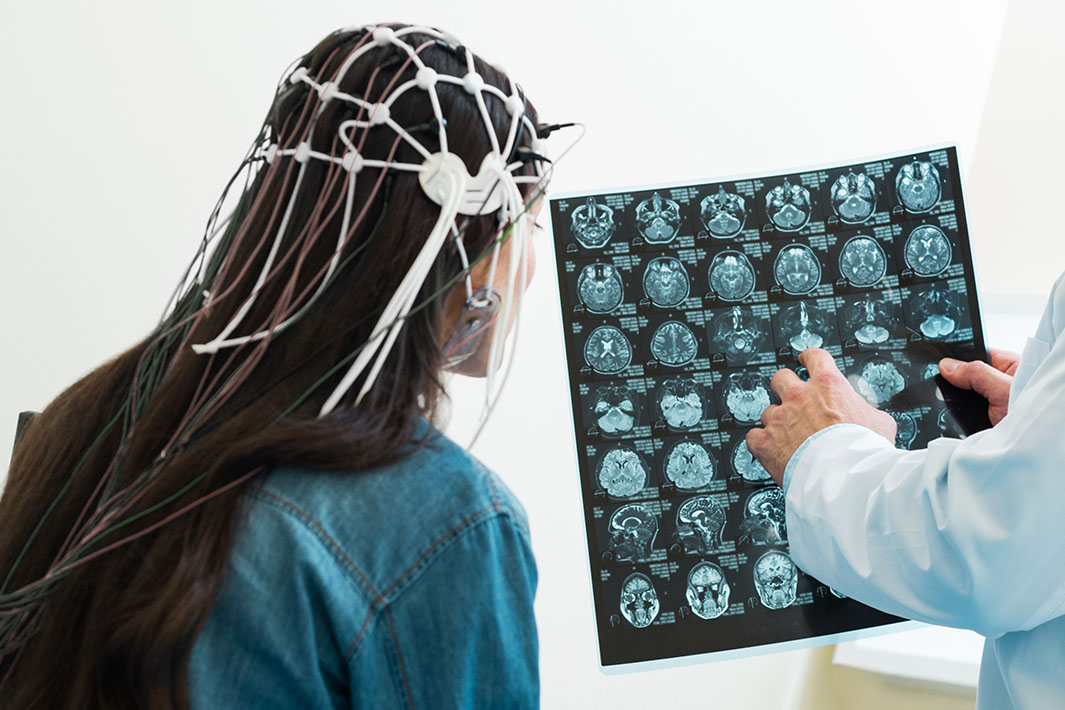Neurological Rehabilitation
Neurological Rehabilitation at Precision Brain Center
Neurological rehabilitation and brain-based treatments are most effective when multiple sensory systems are simultaneously stimulated together. This form of multimodal neurological rehabilitation facilitates rewiring of new dendritic connections between neurons and restores functional connections throughout the entire brain.
The brain is not a static system. It changes over time and is subject to manipulation depending on the inputs it receives. Every act of the human brain involves a recalibration component. In order to recalibrate an instrument, one must have a reliable standard of reference. Gravity is a constant activating stimulus that creates the default network essential for creating maps. These maps that contain stored location points of a person’s body and environment around them. The acceleration force that gravity applies to the vestibular system is the standard input reference. The brain uses this to compare all other incoming sensory pathways to.
The information that the brain receives from the senses, joint and muscle proprioception, and secondary systems are all compared to gravity signals. This ensures that pathways going into the CNS are relaying the same information. Imagine that the auditory system is telling the brain that you are falling forward and to the left, but all other systems say you are falling back and to the right. The brain has to calculate for error and ignore the wrong information coming from the auditory system. This process is performed by the neural integration center and is highly reliant on gravity. The neural integration centers perform calculations of the sensory input signal and relay messages to motor output centers. This controls what information the brain can act on and what sensory input to ignore.

The clinical application of neurological rehabilitation takes these principles into account by recalibrating the vestibular system and eye movement pathways. By doing this, accurate sensory and motor signals are sent to the brain. These signals are required to perform more complicated tasks such as reading, writing, playing music, sports, and feeling mentally and emotionally stable.
In short, a person’s ability to learn is dependent upon their ability to process vestibular information effectively.
This is why activities that promote balance efficiency and spatial awareness have such a profound effect on “higher” brain functions. These higher functions include reading, memory, comprehension, mathematics and executive function. A dysfunctional vestibular system impedes human ability to efficiently stand upright, perform athletic activities, and carry out an intellectual life.
Neurological rehabilitation often includes exercises involving motion stimulation specific to an axis or plane which will recalibrate the vestibular system to fix any errors. Once accuracy is achieved in the vestibular system, other sensory systems begin to remap for accuracy by way of the brainstem and cerebellum. Auditory and visual messages integrate with proprioception from muscles and joints, in the lower brainstem where rewiring begins. This is a result of the precise application of multimodal brain-based therapies. By performing activities that increase the accuracy of the multisensory integrational framework, you increase the efficiency of the entire brain.
Neurological rehabilitation is achieved when the nervous system is stimulated to accurately orientate the central sensory & motor integration centers to its commonly understood reference point. As stated before, this reference is defined by the vestibular system, namely gravity. By training the brain to perform eye movements and vestibular functions accurately you actually change the brain’s chemistry. After all, the brain is the only organ in the human body that learns from past experience and adjusts itself. Functional Neurology and Neurological rehabilitation harness every part of neuroplasticity and the brain’s marvelous ability to form new neuronal networks.

